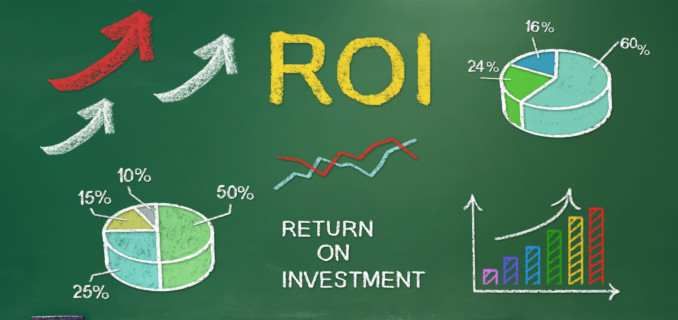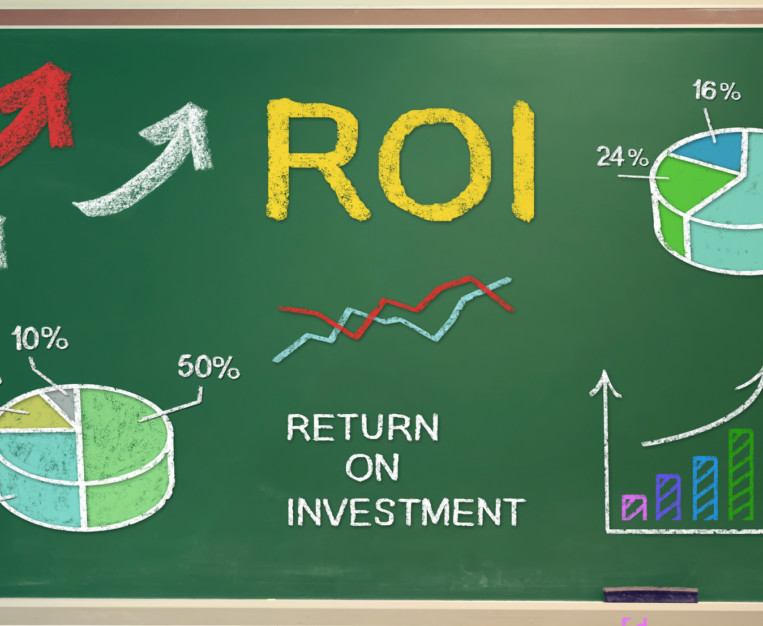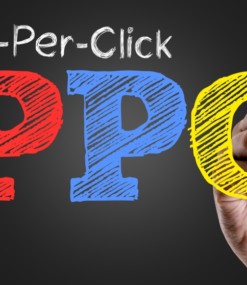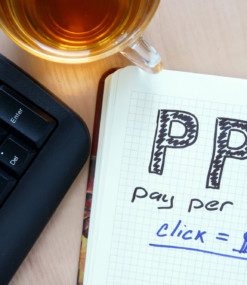Drive Scout Blog
How to improve driving school marketing and ROI
By: Jackie Kass | Posted in: Marketing

July 18, 2018
Do your driving school marketing efforts produce a high ROI (return on investment)? Let’s face it. Most driving schools do not have a huge marketing budget. So, that’s why it’s essential to get the biggest bang for your buck to drive sales, reduce expenses and increase profits.
Driving school marketing 101: Advertising is the key to success

The purpose of marketing your driving school is to build awareness, drive traffic to your website and ultimately increase sales (conversions). You can open your doors, but no one will find out that you even exist without marketing it to the public.
Before spending a dime, your driving school marketing plan should first start with setting goals. Just like any other business goal, a marketing goal must be measurable. You could spend $10,000 on marketing, but if you can’t measure your return on investment (ROI), it’s like throwing money at a wall and waiting to see if it sticks. FYI – it won’t!
Your driving school marketing goals must be specific, realistic, and should support your overall business goals.
How to set driving school marketing goals

If your driving school marketing goals are too lofty or unattainable, you will likely get discouraged very quickly. First, carefully review your growth levels to date. For example, if your driving school sales have increased 5-7% over the course of 3-5 years, it’s unlikely that you can increase sales by 20%, even with the best driving school marketing efforts.
According to Shanelle Mullin, Content and Growth Director at Shopify…
The single most important thing to remember about marketing goals is to stay focused. Choose 1-2 core goals that impact the bottom line and 3-5 supporting goals. Anything more than that will distract you from what’s most important (as will changing goals too often).
Tips to set successful driving school marketing goals
Neil Patel, one of the nation’s top 10 marketing gurus and a top influencer on the web, has researched marketing goals and their effectiveness. Here are his tips, as posted on his trusted blog …
- Take time to truly understand your current position in order to set achievable marketing goals.
- Choose 1-2 core goals that impact the bottom line and 3-5 supporting goals. Anything more than that will distract you from what’s most important.
- Alternatively, try focusing completely on just one goal.
- Pick goals that you genuinely care about achieving (be authentic).
- Don’t just focus on the finish line; enjoy the process of achieving your goal.
- Set the minimum bar at delivering on at least 70% of the planned improvements each quarter.
- Approach each new marketing goal with as much data and information as possible.
- Make sure your short-term goals always support your long-term prospects.
- Make sure everyone from your team is on board when setting marketing goals.
What are SMART Goals?

As posted by to Hubspot, SMART goals are …
Concrete targets that you can easily aim for. They’re realistic, quantifiable, and focused, so you know exactly how to accomplish them.
So, what does SMART stand for? It’s actually an acronym for:
- Specific – In terms of marketing, you should choose the particular metric you want to improve, like visitors, leads, or customers.
- Measurable – If you want to gauge your team’s progress, you need to quantify your goals, like achieving an X percentage increase in visitors, leads, or customers.
- Attainable – Make sure that X-percentage increase is rooted in reality. If your blog traffic increased by 5% last month, try to increase it by 8-10% this month, not 25%.
- Relevant – Your goal needs to relate to your company’s overall goal and account for current trends in your industry. For instance, will growing your Facebook following lead to more revenue?
- Time-Bound – Attaching deadlines to your goals puts pressure on your team to accomplish them. And this helps you make consistent and significant progress in the long-term.
Examples of marketing school marketing goals
With the above in mind, it’s now time to start creating your own driving school marketing goals. The two most important things are to make them realistic based on past growth and to have some way to measure their effectiveness.
Below are some realistic and measurable marketing goals:
- Online sales: Increase by 10%
- Leads: Increase by 8%
- Blog traffic: Increase by 8%
- Facebook video views: Increase by 20%
- Email subscribers: Increase by 15%
- Conversions: Increase by 8%
- Email open rates: Increase by 10%
Driving school marketing 101:
How to increase driving school marketing ROI

First, you spent time and researching your past growth models. Then, you came up with 1-3 core goals and 3-5 supporting goals. So, what’s next? Well, it’s time to set up your ROI goals too.
When you spend $1 on your driving school marketing efforts, how much revenue should you expect in return? In other words, how will you measure if your marketing is effectively generating sales in a profitable way?
Marketing ROI has increased over the years
In the past, the golden rule of marketing was to use different advertising vehicles to increase BOTH reach and frequency. Flash forward to 2018. Now, driving schools can specifically target their closest customer, also known in marketing terms as their “lowest hanging fruit.”
Reach versus frequency

In its simplest form, marketing reach is the number of people you touch with your marketing message or the number of people that are exposed to your message. Frequency is the number of times you touch each person with your message.
Driving school marketing “Reach”
A benefit of increasing the reach of your marketing efforts is that many people are exposed to your ad. The down side is that too many people may see it.
For example, you may consider a 3-month billboard campaign during the busy summer months. Out of 10,000 people that drive by your billboard, only 100 might be in the market for your driving school services.
Reach is great for increasing awareness of your driving school, but it probably will not drive sales.
Driving school marketing “Frequency”
You touch many people in your market (reach) three times (frequency). Is your marketing campaign successful? Back in the 90’s – probably yes. In today’s sophisticated world of highly targeted marketing – probably not.
How to optimize reach and frequency
In a world of unlimited resources, you would obviously maximize both reach and frequency. However, since most driving schools have a limited marketing budget, it’s necessary to lean more towards frequency than reach.
Wouldn’t it be great if you could reach your core driving customers (and only them)? You can with targeted marketing methods! Why deliver your driving school marketing message to everyone in your community when you can reach out to just parents of high school students (limit your reach to your lowest hanging fruit)? Then, hit them up with repeated sales messages (increase frequency of messaging).
It’s today’s magical world of online PPC advertising, you CAN reach your driving school customers and show them your marketing message many times. Plus, the best news of all is that targeted online advertising is incredibly measurable and boasts some of the highest ROI’s in today’s myriad of marketing options. Do you want even more great news? Targeted online advertising doesn’t cost a fortune!
Marketing school 101: All about ROI

Return on investment (ROI) measures the gain or loss generated on an investment relative to the amount of money invested. ROI is usually expressed as a percentage and should be considered when calculating the success or failure of your driving school marketing efforts.
How to calculate ROI
For driving schools, the basic calculation of ROI is the revenue generated by a campaign divided by the cost of that campaign. For example, five dollars in sales for every one dollar spent in marketing yields a 5:1 ratio of revenue to cost.
If you generate $20,000 in revenue for a Facebook ad that cost $450, your ROI would be calculated by dividing $20,000 by $450. That means, for every $1 you spent on your Facebook ad, it generated $44 in sales. Your ROI would be 44:1.
That’s an incredible ROI (and quite possible!). It’s simple way of calculating ROI, but one that is effective for analyzing driving school marketing.
What is a good marketing ROI?
This is a great question and one analyzed in depth by Chris Leone of Webstrategies. Here’s how he answered the all-important question…
A 5:1 ratio is middle of the bell curve. A ratio over 5:1 is considered strong for most businesses, and a 10:1 ratio is exceptional. Achieving a ratio higher than 10:1 ratio is possible, but it shouldn’t be the expectation. A 10:1 ratio every time is unrealistic and shouldn’t be the expectation for your marketing campaigns. For most businesses, a 5:1 ratio will be the target, and anything beyond that is gravy.
How to increase your driving school marketing ROI
In the past, many driving schools used community newspapers to advertise their local driving school. However, what worked in the past doesn’t work anymore.
Print ads can be expensive and they might reach your target customer – parents of 14-17-year-old teens. They will also reach every Tom, Dick and Harry in your area. While you may see an ROI, it most likely won’t be very high.
Instead, if you choose to target your advertising to your lowest hanging fruit, your ROI and sales can explode like fireworks on the Fourth of July.
Steps to increase your driving school marketing PPC ROI
So, you want to get the highest return on investment (ROI). The way to go is with pay-per-click ads. I tried many different advertising avenues throughout the years. Some worked, but many didn’t. However, my PPC ads always produced positive results. Here are some PPC vehicles that I suggest you look into for good ROI.
Google display ads
If you’re currently investing in Google display ads, congratulations. In my experience, Google ads have one of the highest ROI’s. Our annual average ROI for Google PPC ads was 18:1. For every $1 we spent, we generated $18 in sales.
Bing Ads
You haven’t looked at Bing Ads? Look again! Google may be the star player, but Bing is a quieter, yet still valuable player too. Don’t overlook Bing ads.
Facebook Ads
Facebook produces great ROI because of its finely-tuned targeting methodology. Our average Facebook ROI was 17:1.
Re-marketing Ads
Do you want to re-market to customers who visit your website, but don’t make a purchase? Let’s say Jane Doe, a mother of a 15-year-old son in your community, visits your website, but bounces before making a purchase. You know she’s a potential customer because she visited your website in the first place. Was she looking for a cheaper price or just had to finish dinner?
Wouldn’t it be great to show your ad to her while she browsed her favorite websites, like the Weather Channel and Facebook? Well, you can! Re-marketing ads work like a charm.
You can set up re-marketing ads on Facebook, Google, Bing, and even LinkedIn. In the past, my re-marketing ads have produced ROI’s in the range of 14:1 – 22:1. Keep in mind that a 5:1 ROI is generally considered acceptable.
How to track and measure ROI
Google Analytics and Admin Pages on Facebook, Bing and other resources will track the success of your PPC ads. Be sure to set up tracking codes on your website, and then check the metrics monthly.
It’s a good idea to start a monthly report that breaks down your monthly PPC ad spend, the revenue it generates and the ROI. At the end of the year, you can break down your PPC success by month and uncover annual averages.
What good is launching ads if you can’t determine their success? Repeat your biggest successes and eliminate your campaigns with lower ROI’s
In review:
How to improve your driving school marketing ROI to increase profits
If you follow these tried and true steps, your driving school marketing ROI’s will definitely increase over time. It might not happen overnight, but I promise you’ll be very satisfied with the results. Who doesn’t love higher sales and lower costs. Now, that’s a win-win!
- Analyze your growth history
- Set SMART marketing goals
- Utilize frequency over reach
- Invest in Google display, Facebook and re-marketing ads
- Place tracking codes on your website
- Track and measure ROI
- Repeat successes and eliminate failures




